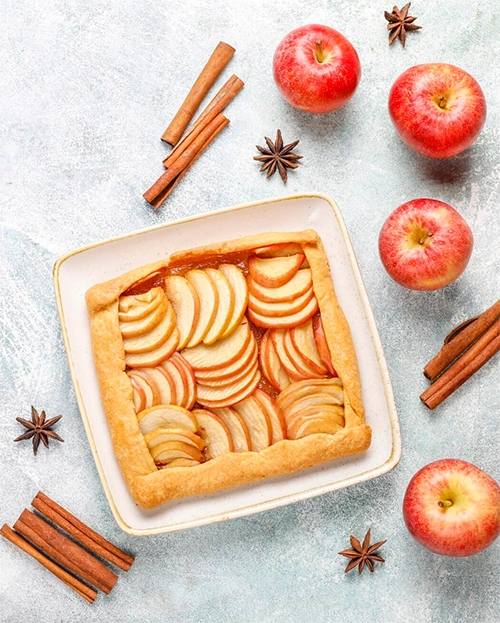

Top Health Benefits of Classic French Apple Tart You Need to Know
The Classic French Apple Tart offers a delightful balance of flavor and nourishment. Apples, the star ingredient, are rich in dietary fiber, vitamin C, and powerful antioxidants such as quercetin and catechin, which support immune function and reduce inflammation. The use of cinnamon not only enhances the flavor but also adds potential blood sugar-regulating benefits. Though the crust contains butter and flour, which contribute saturated fats and carbohydrates, moderate consumption can fit into a balanced diet, particularly when enjoyed as part of a mindful eating experience. The tart provides quick energy, makes use of natural fruit sugars, and offers a more wholesome alternative to processed desserts, especially if prepared with whole wheat flour or reduced sugar options.
Recipe :
Serves 4 people
Enjoy your homemade French Apple Tart!
When preparing the tart, the temperature of your ingredients and the method of mixing are crucial for the best results. Make sure the butter used in the crust is very cold and cut into small cubes; this ensures a flaky and tender pastry. Avoid overworking the dough, as too much kneading will develop gluten and make the crust tough rather than crisp. When slicing the apples, keep them thin and uniform to allow even cooking and a visually appealing design. Letting the apple slices marinate with sugar, lemon juice, and cinnamon enhances their flavor and ensures they soften beautifully in the oven. Brushing the tart with warm apricot jam or honey after baking not only adds shine but also a final layer of flavor and a touch of elegance. Always preheat the oven thoroughly and keep an eye on the tart during the final minutes to prevent overbrowning.

This tart is suitable for vegetarians and can be enjoyed in moderation by individuals following a low-calorie or DASH diet, especially if adjustments are made to reduce sugar and butter. However, it is not suitable for those adhering to a strict ketogenic, paleo, or vegan diet in its original form, due to the presence of flour, sugar, and butter. Gluten-intolerant individuals should also avoid the traditional recipe unless a gluten-free flour is used. For those aiming for a high-protein or low-carb plan, this tart may not align well with their macronutrient goals unless modified significantly. Nonetheless, with thoughtful substitutions—such as using almond flour, plant-based butter, and natural sweeteners—the recipe can be adapted to fit more specific dietary needs.
naya (April 13, 2025, 6:31 a.m.) : Delicious and beautiful